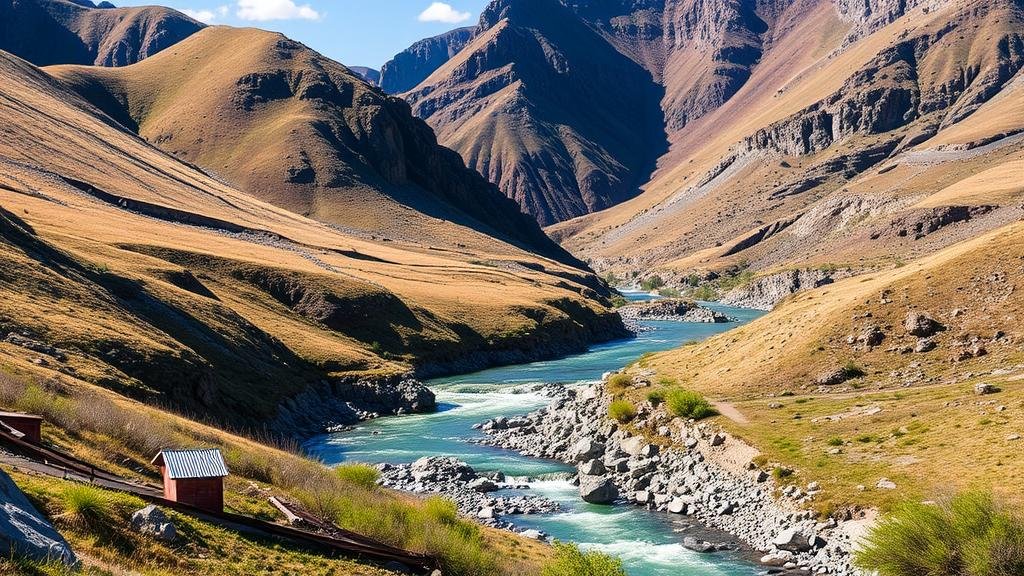How to Evaluate Placer Gold Potential in Flat, Open Valleys
How to Evaluate Placer Gold Potential in Flat, Open Valleys
Placer gold prospecting in flat, open valleys presents unique challenges and opportunities. These geological environments can often obscure the signs of gold deposits, making evaluation critical. This article will explore effective methods for assessing placer gold potential in such areas, backed by examples and practical applications.
Understanding Placer Gold Deposits
Placer gold deposits are accumulations of gold particles that have been moved from their original lode source by various geological processes, primarily erosion. e deposits can be found in riverbed sediments, floodplains, or even ancient lake beds. In flat, open valleys, the absence of steep gradients means that sedimentation processes differ from those in mountainous regions, requiring specialized evaluation techniques.
Key Geological Indicators
Several geological indicators can signal the potential for placer gold within flat, open valleys. These include:
- Alluvial Deposits: These sediments, which have been transported by water, often contain concentrations of gold. River channels, especially those that have shifted course over time, should be meticulously studied.
- Granite and Schist Outcrops: Proximity to igneous rocks such as granite and metamorphic rocks like schist is crucial, as these can be the primary sources of gold.
- High-Quality Mining Structures: Look for historical mining activity indicators, such as old tailings piles or remnants of hydraulic mining operations. These can highlight significant locales worth further investigation.
Field Techniques for Evaluation
Evaluating placer gold potential in valleys requires a combination of field studies and sampling techniques. The following methods are essential:
- Soil Sampling: Collect soil samples from various depths in the valley. Testing for gold content can reveal the concentration of gold particles in specific areas.
- Panning and Sluicing: These traditional techniques are effective for detecting small concentrations of gold. By panning samples from targeted areas, prospectors can gauge the viability of a site.
- Geophysical Surveys: Techniques such as ground-penetrating radar (GPR) or resistivity surveys can help locate buried channels and structures, indicating potential locations for gold deposition.
Environmental Considerations
When evaluating placer gold potential, it is crucial to consider the environmental impact of prospecting activities. Prospectors must comply with local regulations and practices, which often include:
- Permitting: Ensure that any prospecting activity is legally sanctioned.
- Erosion Control: Take steps to minimize soil disturbance and protect local wildlife during sampling and extraction processes.
- Rehabilitation: Follow up with land reclamation efforts to restore any altered landscapes post-prospecting.
Case Studies and Real-World Applications
To illustrate successful placer gold evaluation, consider the example of the Carlin Trend in Nevada, known for its rich gold deposits. Prospectors carefully analyzed the areas flat valley structures and utilized soil sampling and geophysical surveys to uncover significant placer operations, leading to successful gold extraction while adhering to environmental standards.
Another example includes the Klondike Gold Rush in Canada. Prospectors utilized a combination of panning and sluicing in flat, river-adjacent valleys, leading to the discovery of substantial placer gold deposits. Such historical cases highlight the effectiveness of employing diverse techniques and maintaining awareness of environmental impacts.
Conclusion and Actionable Takeaways
To wrap up, evaluating placer gold potential in flat, open valleys requires a systematic approach that combines geological awareness and practical techniques. Regularly engage in:
- Conducting soil sampling and analysis to identify promising areas.
- Employing both traditional and modern prospecting techniques, such as panning and geophysical surveys.
- Being aware of and complying with environmental regulations to ensure sustainable practices.
By applying these methods, prospectors can increase their chances of success when exploring flat valley environments for placer gold deposits.



